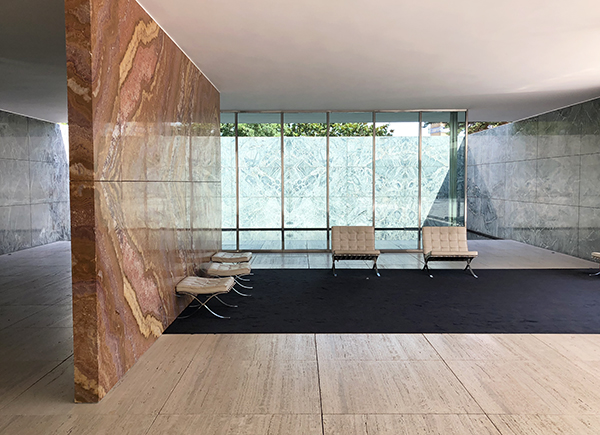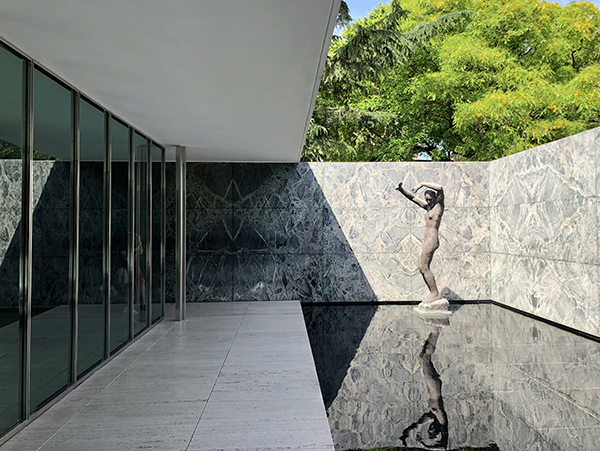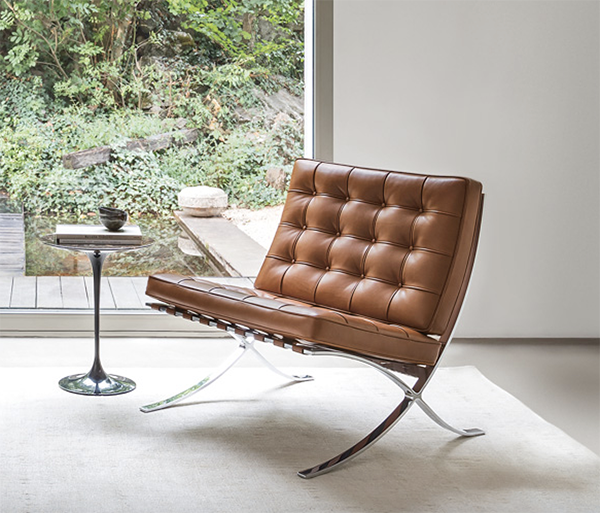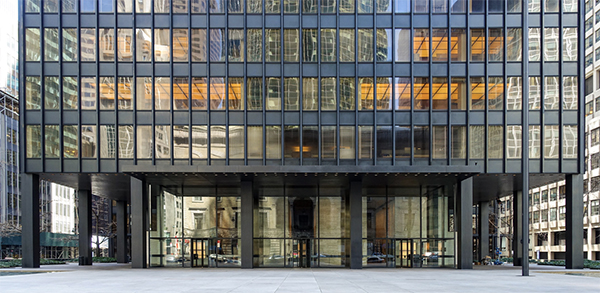Design Visionary: Mies van der Rohe
Mies van der Rohe is considered one of the most influential modern architects of the 20th century. Born in Germany in 1886, he was an important figure in the development of modern architecture, which was characterized by a focus on functionality, simplicity, and the use of new materials like steel and glass. Mies van der Rohe’s designs were revolutionary, and his influence can be seen in the work of architects in the San Francisco Bay Area and beyond.


One of Mies van der Rohe’s most significant buildings is the Barcelona Pavilion. Built for the 1929 International Exposition in Barcelona, Spain, the Pavilion was designed to showcase the German government’s commitment to modern design. The Pavilion is a masterpiece of modern architecture, with a sleek, minimalist design that features marble and glass walls, a travertine floor, and a stunning reflection pool. The Pavilion’s use of simple, elegant lines and honest materials like glass and steel were groundbreaking at the time, and it has since become a hallmark of modern architecture. I was fortunate to visit the Barcelona Pavilion a few years ago and seeing the building and interior design was a highlight of my trip.
Another of Mies van der Rohe’s most significant buildings is the Tugendhat House in Brno, Czech Republic. Built in the late 1920s, the Tugendhat House is a prime example of the International Style of architecture, which was characterized by an emphasis on functionality, simplicity, and the use of new materials like steel and glass. The house features a flat roof, a free-flowing floor plan, and walls of glass that allow for natural light to flood the interiors. The Tugendhat House is considered a masterpiece of modern architecture and has been designated a UNESCO World Heritage site.

In addition to his buildings, Mies van der Rohe is also known for his furniture designs. His most famous piece is the Barcelona chair, which was designed in 1929 for the Barcelona Pavilion. The chair features a simple, elegant design with clean lines and a minimalist aesthetic. It is a perfect example of Mies van der Rohe’s philosophy of “less is more” and has become an icon of modern design.
Mies van der Rohe’s influence on modern architecture is hard to overstate. His focus on simplicity, functionality, and the use of honest materials like steel and glass have become hallmarks of modern architecture. His work has inspired countless architects and designers around the world, and his legacy continues to influence the field today.

One architect who was heavily influenced by Mies van der Rohe was his student, Philip Johnson. Johnson was responsible for the design of the Seagram Building in New York City, which is considered one of the most iconic examples of modernist architecture. The Seagram Building features a minimalist design with a steel frame, glass curtain walls, and a simple, elegant form. The building is a testament to Mies van der Rohe’s influence on modern architecture, and it is widely regarded as one of the most important buildings of the 20th century.
Another architect who was heavily influenced by Mies van der Rohe was Richard Meier. Meier’s designs are characterized by a minimalist aesthetic, with an emphasis on clean lines and simple forms. His use of glass and white surfaces is reminiscent of Mies van der Rohe’s work, and he has often cited Mies van der Rohe as one of his primary influences.
‘Design Visionaries’ is our latest blog series, focusing on the architects and designers that have inspired and shaped us as San Francisco interior designers. Stay tuned for our next feature on Charlotte Perriand!
